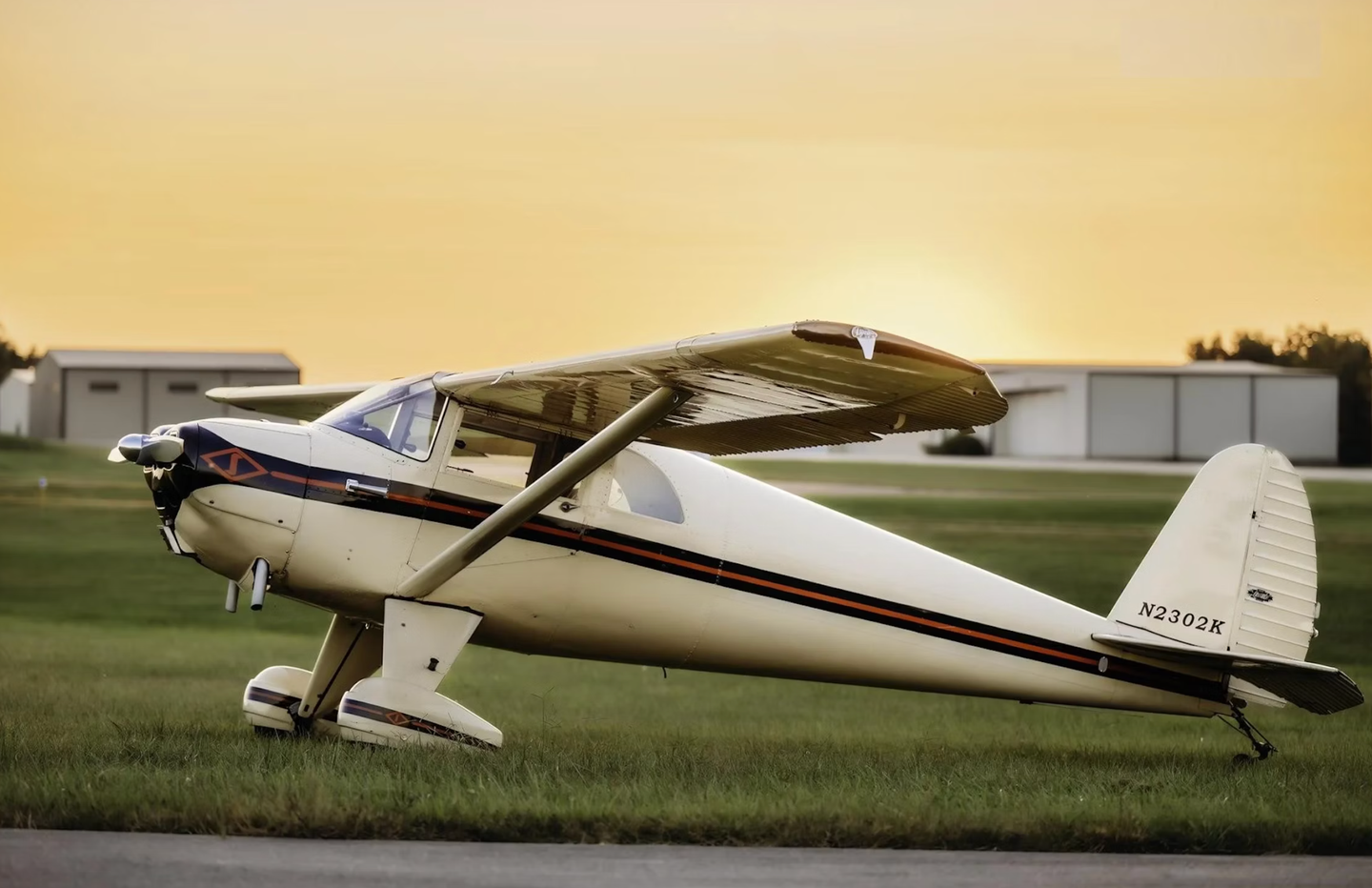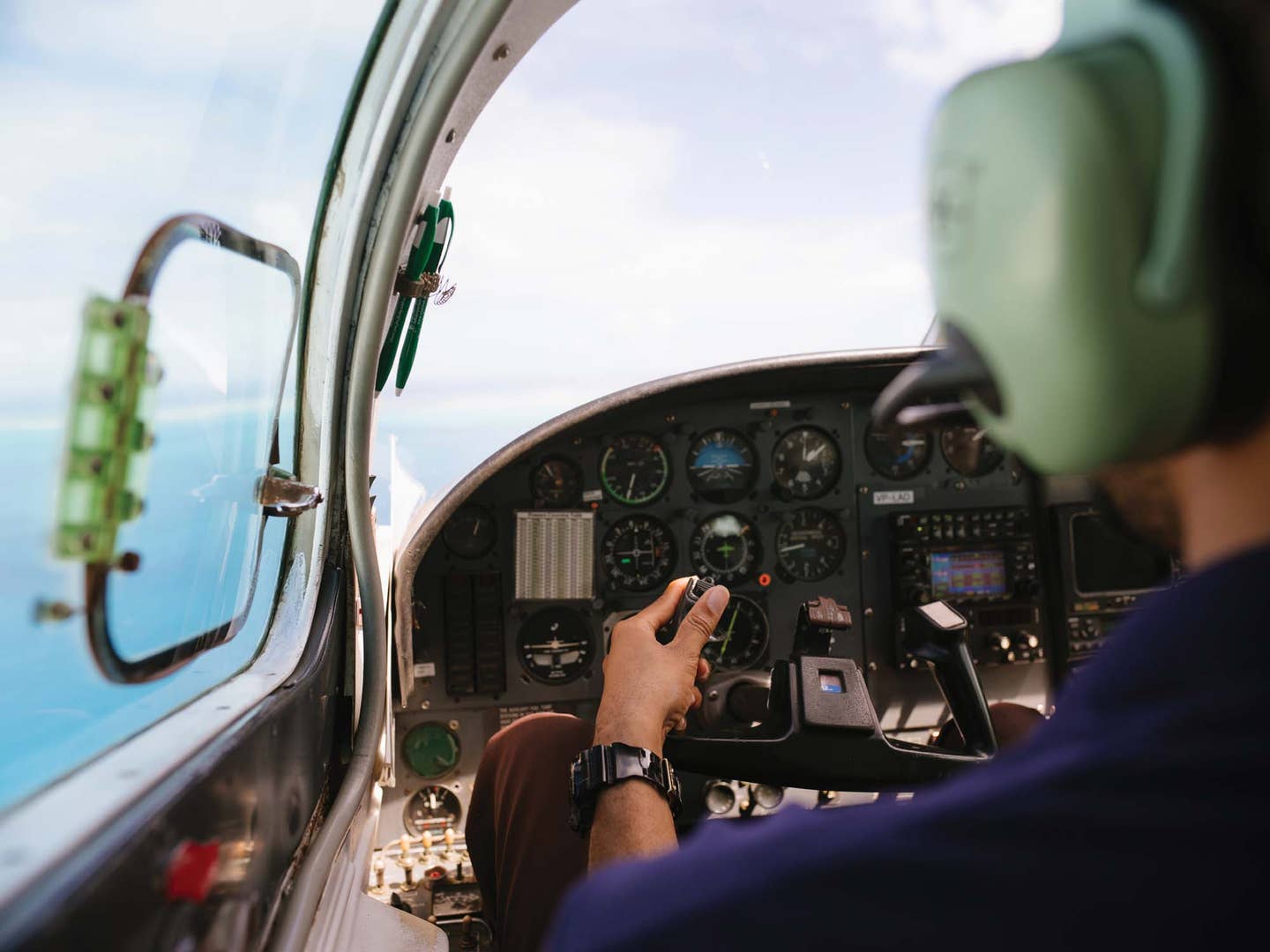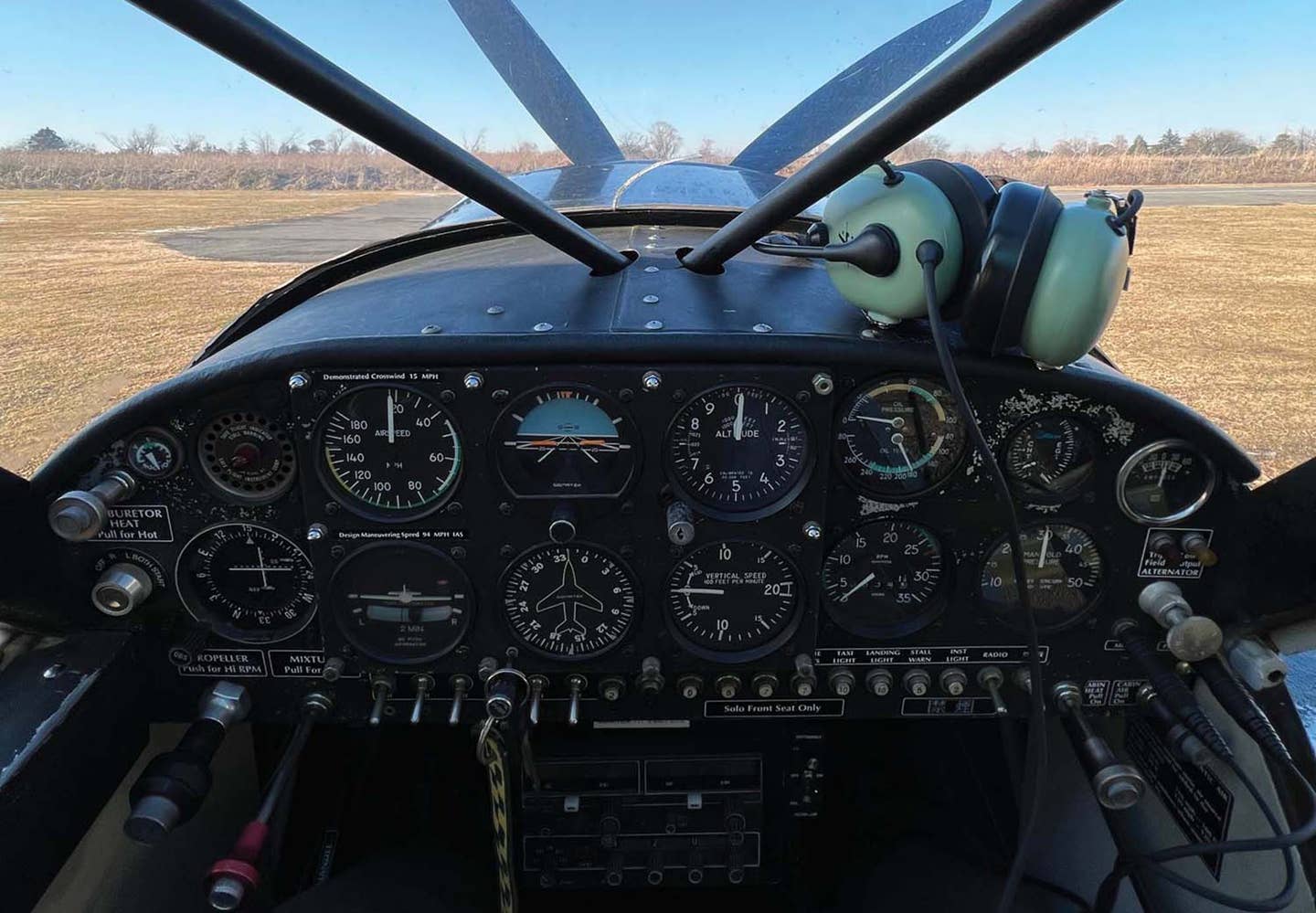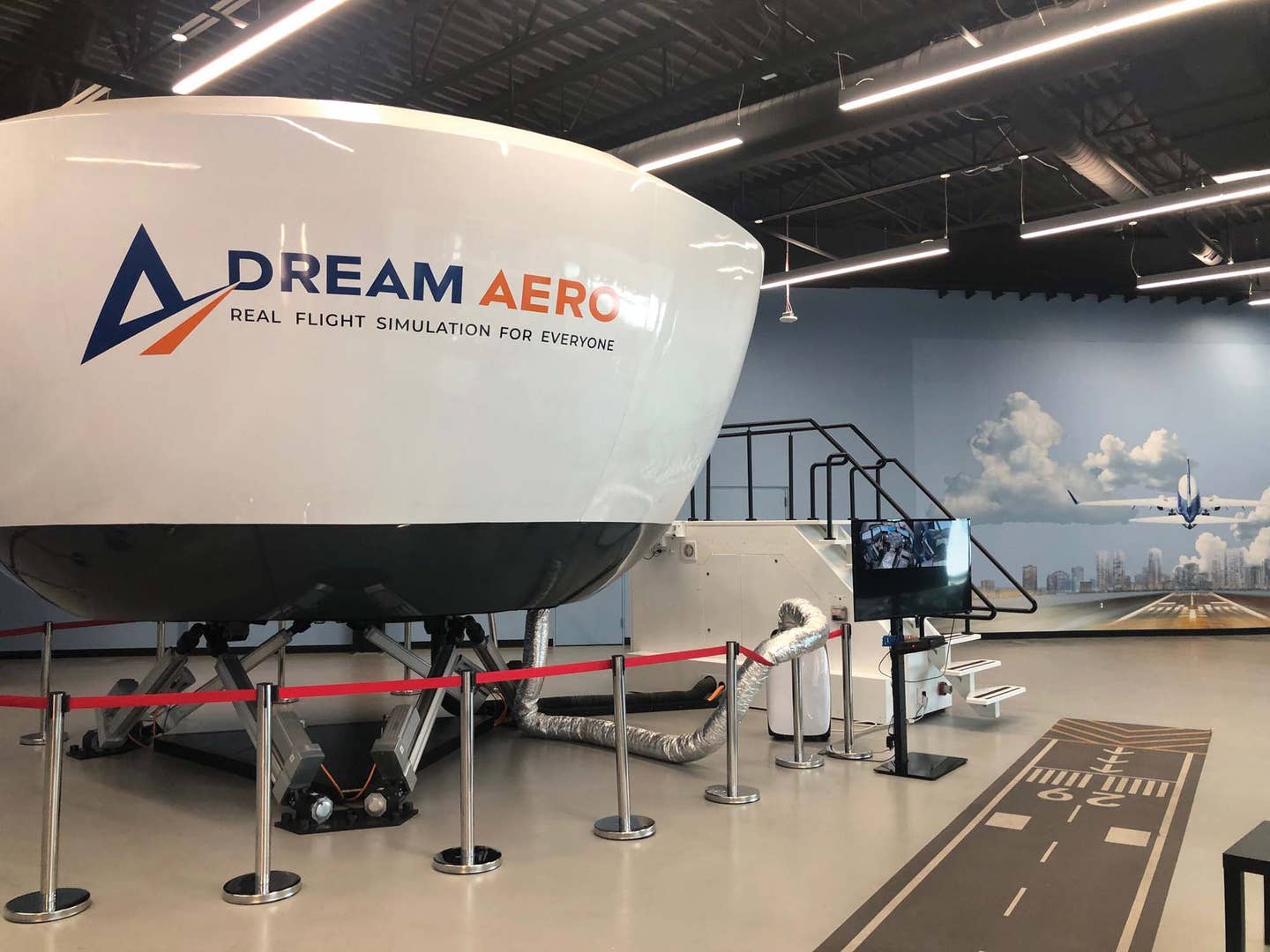Dueling Flight Sims
Forty years ago, we would have never thought about the day when a desktop computer flight simulator would be used in a serious manner to train, maintain, and foster enthusiasm…

Idle power back pressure into a squealing stall horn, and a turn rolled me rapidly into a left hand spin. Bam! Shockingly real and startling too. [X-Plane 12 screenshot courtesy Peter James]
Forty years ago, we would have never thought about the day when a desktop computer flight simulator would be used in a serious manner to train, maintain, and foster enthusiasm for being a pilot. Now we have so much to be grateful for, as the level of fidelity and graphical realism is mind-boggling. As a kid back in 1981, I sat for hours flying on a gray screen, marveling at the Chicago skyline represented by just sticks and lines while listening to the powerful Cessna 182RG engine going “tick, tick, tick.”
Everybody has memories of the original Microsoft Flight Simulator software versions. Then not too many years later, computer programmer Austin Meyer developed his Archer II simulator which morphed into the famous X-Plane simulation program we fans have grown to know and love. Today, when talking of PC civilian sims, most of us immediately think of just two. MSFS2020 and X-Plane 12 dominate the market. However, others exist for military and civilian fans and won’t be neglected in future articles.
But I want to focus on how both X-Plane and MSFS can benefit newly certificated pilots and students alike, so I will look at a few scenarios the fairly new pilot would benefit from flying virtually in a snapshot of both sims, both pros and cons.
Slow Flight, MCA, Stalls, and Spins
For this scenario, I started by using X-Plane 12, basing the simulation at Alpine Airport (46U) in Wyoming, for a somewhat high-altitude challenge (airport elevation is 5,600 feet msl), along with variable weather conditions. After starting up the Cessna 172XP in a realistic manner—partially leaned for takeoff and using live weather—I climbed up over the local area to roughly 2,000 feet agl to practice slow flight and minimum controllable airspeed (MCA). I noticed the X-Plane 12 Cessna handled all this quite realistically from what I remember years ago as a CFII: full flaps, with speeds in the 50- to 60-knot range. Then I flew some MCA with the stall horn beeping and mushing controls, watching the vertical speed indicator stay at zero with power but not too much back pressure to induce a stall—just an aerial dance of working feet, pitch, and throttle.
Slow flight and MCA were extremely realistic and accurate in XP12 as if the aircraft was alive and reacting to the world as it should.
Soon I decided to go all the way into some stalls at a fairly unsafe altitude. At only about 1,500 to 2,000 agl, I started with power-off and power-on stalls, both in turns and straight ahead. Then it was time to see if the airplane spins as I remember from CFI training days. The feeling of the flight model during this was very high and precise.
Power to idle, then back pressure into a squealing stall horn and a turn rolled me rapidly into a left-hand spin—shockingly real and startling.
Sure enough, the back pressure in a turn did the trick, with a fully breaking stall—horn screaming—and bam, the rapid roll into a spin was shockingly real. The recovery inputs felt natural and realistic—slightly sloppy but well modeled—and I recovered at about 300 agl after probably two rotations. It’s certainly not the way we teach in the real world, but having poor risk management skills is the norm on a PC. The fluidity of X-Plane 12 aerodynamics is on full tilt here.
I tried the MSFS2020 Cessna 172XP, at the same airport for the same tests, and the same live weather, only this time as MSFS interprets it.
MSFS never used to model spins nor have a really high-fidelity flight model, but in this test the modeled airplane produced a realistic spin. This was prompted by a power-on stall that resulted in a rapidly winding spin. Sounds of the stall and spin were pretty much on par with X-Plane 12, with the exception being the stall horn X-Plane 12 sounded more realistic and dynamic.
Once airborne in the MSFS 172, I tested slow flight, MCA, and spins in the same manner. Where the MSFS franchise was never known for realistic flight modeling in the past, it is clear this newest version represents a breakthrough. It felt very similar to X-Plane 12’s reactions, with still a wee bit of the “flying-on-rails” feeling we know from previous MSFS versions—but a massive improvement overall in flight modeling for this scenario. I was impressed it spun—and spun well. Recovery was realistic and responsive.
Failure and Emergency Training Scenario
No pilot training would be complete without failure and emergency options, and this is where X-Plane has always smashed the competition, with hundreds of possible failures and emergencies you can either precisely set to occur or randomize each and every option for a nerve-wracking experience.
In this example, I set up a bird strike to occur at exactly 200 feet agl. Despite this setup, I was still startled when it happened. The results were unknown until the engine oil pressure and temperatures started trending to the bad side. I cheated by looking outside and was shocked to see fire and smoke trails.
The scenery is compelling, but the overall lack of failure scenarios and a slightly less fluid flight model makes the emergency practice slightly less beneficial and startling. It’s too predictable since you must pretend a failure or emergency is unfolding. But the visual beauty and accuracy of the world around you are awesome. You’ll gain knowledge, crisis handling, and emergency off-airport planning in either sim.
The birds came out of nowhere fast in the simulation. I had nowhere to go and was coping with a big startle factor at that. You could cope in real life far better by having had the ability to experience that sudden event in simulation.
This engine had really taken a hit. Time to secure and shut down or choose to delay your response to see what might happen next.
I aimed for a road along the shore with some scrubby areas that could provide a safe landing site, although there were houses and bigger trees at the far end of the view.
With a comparable setup in MSFS2020 but without failure modeling, I cut the engine at a similar location and altitude. The scenery is more realistic as it’s based on true Earth images that load by default as you fly. Subscribing to Ortho scenery photorealistic terrain is possible on X-Plane 12 as an option.
I made a safe touchdown in MSFS in a grassy area, dodging road traffic. This is where MSFS takes the cake, “off-roading” with very photorealistic scenery by default. X-Plane will provide similar scenes via downloads and simple installations but by default isn’t as sharp as MSFS.
Convective Dangers and Weather Modeling
Simulating thunderstorms is a thrill, especially when the danger and risks involved can be simulated realistically. Fortunately, both simulations do this quite well now—a new breakthrough for MSFS and an old tried-and-true risk/danger model for X-Plane reworked and improved for X-Plane 12. I manually set up thunderstorms to begin developing, with a trend toward deteriorating weather, so storms would slowly increase in coverage and intensity, making for some cloud shots as well as danger. I know X-Plane has an advantage here.
I looked toward the bad weather and compared it to what I saw on ForeFlight. It’s easy hooking up any X-Plane session to ForeFlight to get the exact thing you’d see in real life. ForeFlight can be added to X-Plane 12 readily.
The depiction on radar, based on my area, was pretty realistic, I must say. What I really wanted to test was the weather over time, and a particularly fun exercise in X-Plane 12 is to park somewhere, use the outside view, and watch and wait. You’ll see and hear the weather forming around you and moving in.
MSFS does something similar, yet I felt the special effects, especially the audio world of these storms approaching, in X-Plane 12 was a bit more dramatic. The things that really caught my attention were the violent wind and rain noises. The rain sounds in X-Plane 12 are loud, especially in flight. Hitting rain at twice highway car speed is dramatic; at 500 knots in a jet it is mind-blowing. I recall once icing up so severely during an X-Plane 12 session that I had to set it down in the bush, with smoke billowing about. I waited, listened, and heard severe wind, rain, and hail lash the cockpit. The water was pouring over my view outside my broken world. The view out the window was scary, and I was trapped and needed rescue.
Iced-over windows as thunderstorms in high altitudes can quickly turn rain into snow and hail as happened to me in this manually set scenario.
What is this?! I had left for lunch while “tied down” as storms were approaching only to return to my horror to see the severe weather had dropped the temperatures from 20 degrees Celsius to about 5 degrees with snow or hail covering the ground. The windows actually had some ice clearly on them. The airplane had been blown far off the ramp into the grass. What amazing realism, danger, variability, and great fun this was. I wish I had stuck around to watch. On second thought, another advantage in X-Plane 12 is replay mode.
Convection building in MSFS2020 is okay. There are great skies and graphics for sure—just slightly less exciting and it just quite doesn’t have that feeling of danger I got with X-Plane 12.
Both sims have amazing weather. The realism of storms in X-Plane 12 wins in my opinion. The turbulence and dangers are genuine, with consequences. The daytime chop, thermals, and under-cumulous base roughness are all better modeled in MSFS2020, which recently had a massive weather engine redo. The cloudscapes and textures looked almost photorealistic in MSFS currently and are beautiful, but thunderheads in X-Plane 12 form, tower up, and stand more realistically than MSFS.
In X-Plane 12, using live weather was far too smooth in thermals, or sunshine versus shade. I felt that a few jumps, jarring, and/or nauseating motion was needed in X-Plane 12 when flying on a sunny day down low. All this can be tweaked by manually setting conditions.
Our two front-runner civilian sims undergo frequent enhancements and refinements. By using either sim or both, as many of us do, any level from beginner to airline pilot can find something to enjoy and use as a tool of proficiency, exploration, and adventure.
There’s never been a better time in the past 40 years to enjoy this hobby since almost daily there’s something new to discover.
The hottest links to visit often for X-Plane and MSFS include www.x-plane.to, www.x-plane.org, and www.flightsim.to. Don’t forget to grab the Honeycomb Starter set from our friends at Sportys as well to launch your sim into the next level of realism and precision.
Finally, I am a huge advocate of both XPRealistic and FSRealistic add-ons, as both sims need that extra sound, vibration, head action, and motion thrown in.
Editor's note: This story originally appeared in the August 2023 issue of Plane & Pilot magazine.

Subscribe to Our Newsletter
Get the latest Plane & Pilot Magazine stories delivered directly to your inbox






